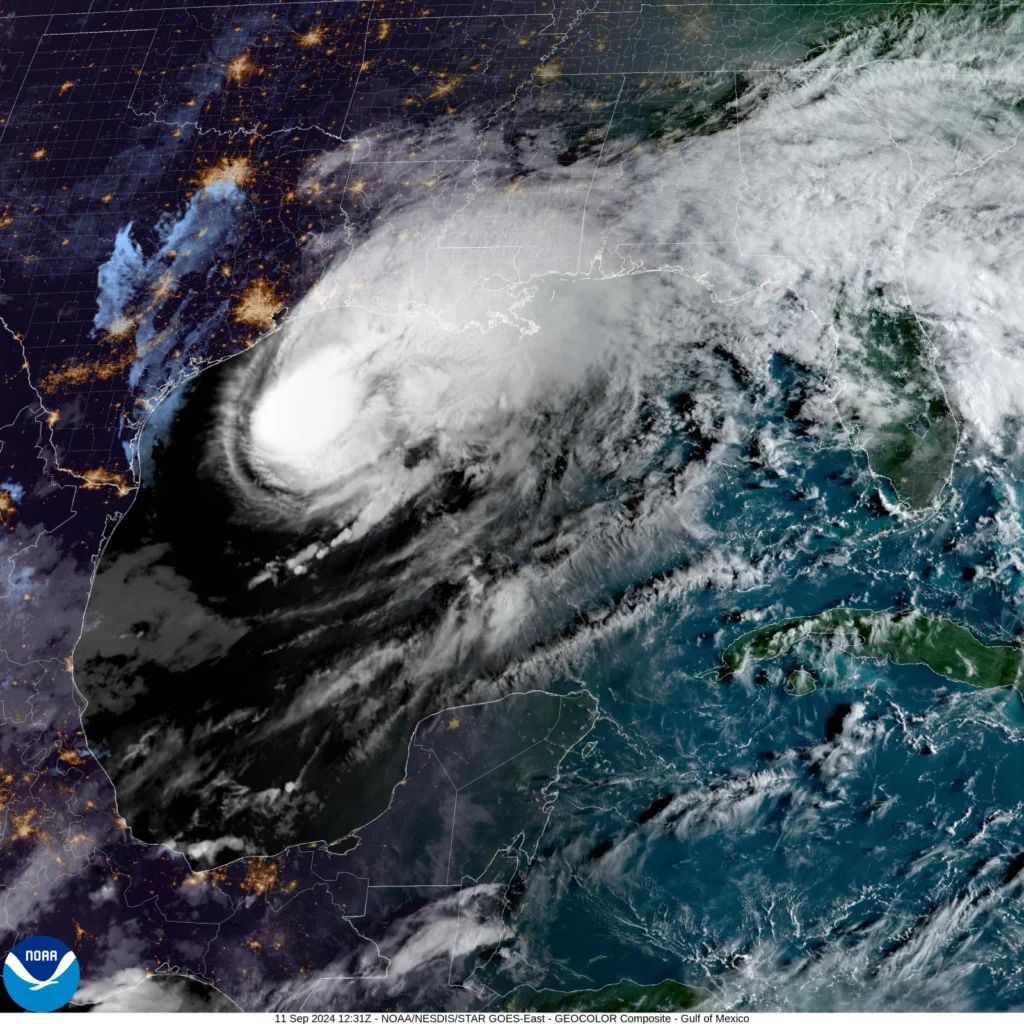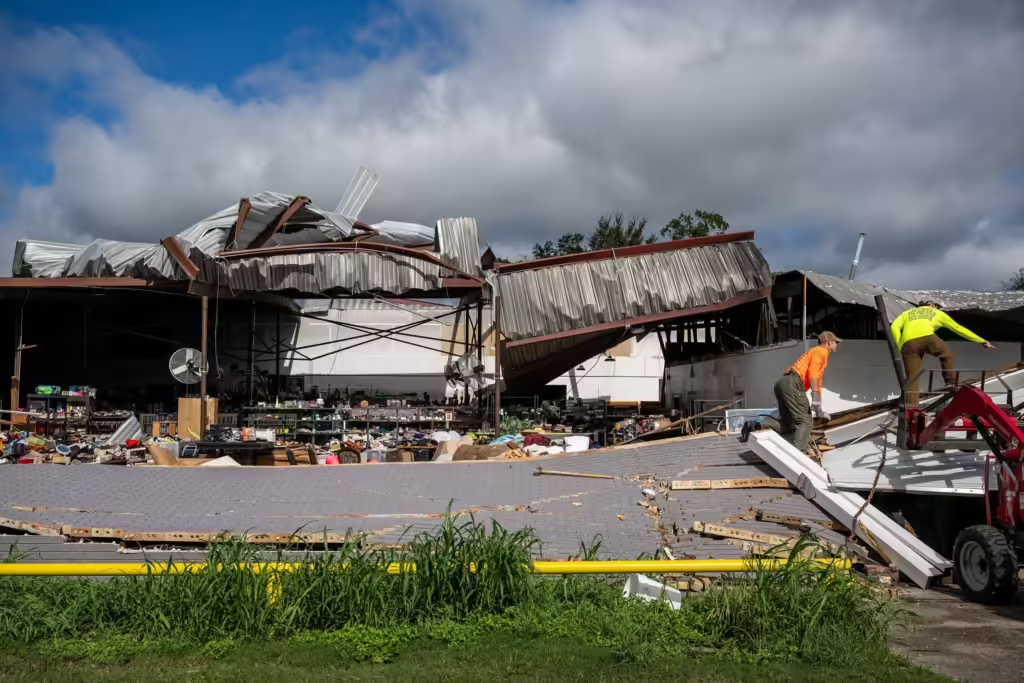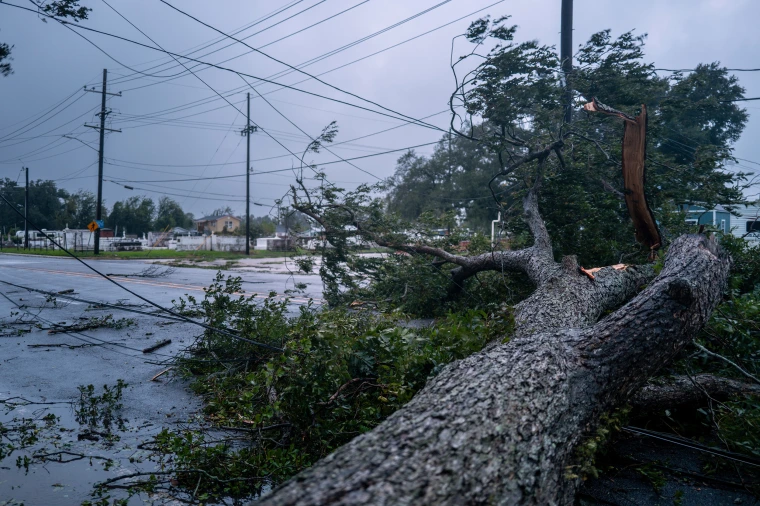| In Short |
| Hurricane Francine made landfall in Louisiana as a Category 2 storm with winds of 100 mph. |
| Around 450,000 people in Louisiana are without power, with major flooding reported across several parishes. |
| Numerous water rescues were carried out, with emergency shelters set up for displaced residents. |
| The storm disrupted oil production, with major energy hubs in the Gulf shut down ahead of the storm. |
| Mississippi also experienced heavy rains and flooding, further straining emergency services. |
Hurricane Francine made landfall over Louisiana on September 11, 2024, with 100-mph wind gusts and heavy rain that flooded homes and streets from the Gulf Coast. With 450,000 losing power and a huge infrastructure blow, Louisiana declared a state of emergency. The eye of the storm has now been well inland and is leaving quite a trail of destruction in its wake.
Landfall and Immediate Impact
Francine made landfall near Southern Louisiana in Terrebonne Parish, late Wednesday afternoon. Winds up to 100 mph whipped through the region, leaving severe damage in the wake of the storm. Flooding hit areas like Thibodaux and Kraemer-water rescues are underway as people get trapped in their homes. According to local authorities, several incidents have been reported where residents were pulled to safety, including a harrowing rescue where one man saved another trapped inside a submerged vehicle.

The Louisiana National Guard and first responders have actively coordinated relief efforts in the flood-affected areas, rescuing hundreds of people from the rising waters and from among the fallen debris. Downed power lines, uprooted trees, and blocked roads were some of the storm’s intensities, adding to hindrances to rescue operations.
Widespread Power Outages and Evacuations
Approximately 450,000 residents in Louisiana are without power due to downed power lines and damage to the electrical grid. Multiple parishes, including Lafourche and Terrebonne, have enacted curfews to prevent people from venturing into dangerous floodwaters or storm-damaged areas. Evacuations were mandated in parts of Grand Isle, Lafitte, and Barataria, as authorities warned that storm surges could reach life-threatening levels.
Local officials have distributed sandbags to help mitigate the impact of the flooding, but many areas remain inundated, with water levels exceeding predictions. St. Mary and Terrebonne Parishes have activated floodgates to protect critical infrastructure, and the Louisiana Offshore Oil Port was shut down ahead of the storm, disrupting energy production across the Gulf Coast.
Rescues and Safety Measures
Dozens of water rescues were carried out as emergency services responded to calls for help with floodwaters continuing to rise. Among the incidents reported, one Louisiana State Police officer was injured when he was struck by a tree while he was clearing a roadway on Interstate 10. Meanwhile, in New Orleans, one of the more dramatic rescues to unfold had the heroic tale of a local man saving another who had been trapped in a submerged truck.

Hundreds of residents have been relocated to emergency shelters across the state, and authorities anticipate hundreds more will seek refuge as the storm’s remnants continue to pose risks. The situation is fluid, with calls from authorities to show caution while debris-filled waters present ongoing hazards.
Mississippi Also Impacted
Over into Mississippi, Francine’s ire spilled, lashing the coast with driving winds and heavy rains that cut electricity lines and caused moderate flooding. Jackson County reported downed trees and blocked roads, with several calls coming in to emergency services.
What’s Next?
With Hurricane Francine continuing to weaken, it has now been downgraded to a tropical depression as it heads deeper inland; however, residents in Louisiana and Mississippi are still reeling from the consequences of flooded homes, disrupted services, and a long recovery process. The storm’s impact on oil exports from the region is likely to have consequences for energy markets in the days ahead, with oil production facilities shut down in advance of the storm.
With significant damage and thousands affected, the focus now shifts to recovery efforts, as Louisiana and neighboring states begin the long process of rebuilding after Hurricane Francine’s destructive path.
For Latest News Updates, Click Here.
